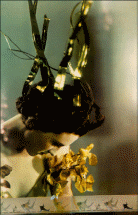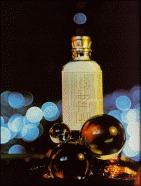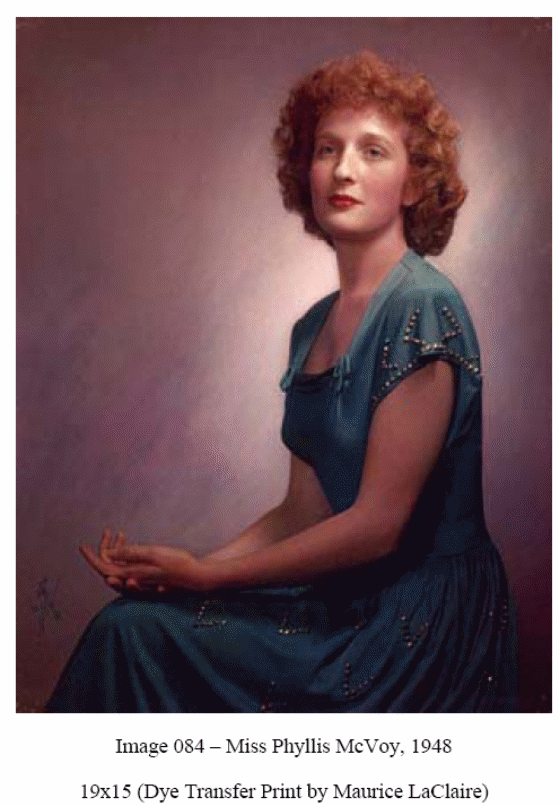The concept of capturing images on objects without having to draw them was first introduced to the world by Joseph Nicephore in 1872. This method needed eight hours of exposure for the image to get imprinted. But it was Louis Daguerre who partnered with Nicephore who was credited with having first introduced the concept called photography. The word is derived from Greek, which essentially means writing with light. At that time all images produced were in black and white and eventually all masters of the art came to believe that the only artistic way to record photographic images was in black and white. This paper looks at the introduction and influence of color into the world of photography.
Even during the early stages of black and white photography, efforts to reproduce images in color were already underway. But it was not until 1859 that a color image was projected using a system invented by an English Physicist named James Clerk Maxwell. He had inadvertently led the way to the splitting of the primary colors which is still in use today. What Maxwell did was to shoot the same image using three cameras each using a red, blue and green filter. The resulting three pictures were placed over each other and projected which gave a reasonably accurate color image.
But actual recording of color images on paper or glass had to wait for some more time. In the meantime experiments around the world had found that just like compounds of silver used in black and white photography would react to light, there were other chemicals that would react when exposed to different colored lights. The main problem faced by the inventors were that since more than one chemical was required to capture all the colors, the negative would have to be done in multiple layers. Helmut Kalmus who was the founder of Technicolor Laboratory at the Massachusetts Institute of Technology first founded a multi layered film that could capture two colors. Kodak introduced a practical positive full color film called Kodachrome in 1935 and a negative color film called Kodacolor in 1941. “In 1935, the first practical full-color film for still photography, a positive transparency film, was developed by Leopold Mannes and Leopold Godowsky and licensed to Kodak.” (History of Color Photography).
In the days of black and white photography, its professional users mainly focused on photographing views of other countries, landscapes and portraits. They became experts at using black and white as a medium of expression of color. It was only natural that such professionals did not welcome the arrival of color photography. Even today there are professionals who swear by black and white images and still do not use or just marginally use color for their work. This sentiment is clearly apparent in the words of Walker Evans. “There are four simple words for the matter, which must be whispered: Color photography is vulgar. When the point of a picture subject is precisely its vulgarity or its color-accident through man’s hand, not God’s, then only color film can be used validly.” (Lesson 3: Chapter 4: Color Photo History: Color Photography is Vulgar). Evans was on of the first modernists in America in the world of photography. By the time Evans was around color photography had reached a stage where it could be taken by ordinary people.
Early color prints had a problem of fading with time, but it had been corrected to a large extent by that time. The fact that color photography was enthusiastically accepted and used by commercial photographers and the common man made the artistic photographers like Walker think that they were a special band of people. They argued that color photography was far too realistic to be called a work of art. This statement was ironical in the sense that during the early days of black and white photography, the same accusations were leveled at pioneers by painters and portrait artists. Another photographer Ted Grant, who shared the same view on color had stated that “When you photograph people in color, you are photographing their clothes. When you photograph them in B&W, you photograph their souls”.
The revolution in color photography came in 1935 by the introduction of the Kodachrome film by Eastman Kodak. It is an interesting fact that the method was not developed by Kodak, but by Leopold Mannes and Leopold Godowsky. The two friends worked in the development of color film and later sold the rights of color processing to Eastman Kodak. They later worked with Kodak in the introduction of the Kodachrome color film. It became so popular among professionals and amateurs alike that the company was prevented from stopping its production even though it was expensive and had environmental concerns. There is still one laboratory in the world that processes Kodachrome film even now. Kodak’s only major competitor of consequence was Agfa. Another landmark event that came in 1946 was Kodacolor. As a marketing gimmick, Kodak supplied an envelop with the print. After the film was exposed, it could be sent by mail to Kodak labs in the US. The company would process it and then send back the color prints to the photographer by post.
As mentioned earlier, color as a medium for photography was eagerly taken up by commercial and amateur photographers especially after the introduction of the Kodachrome. Well known magazines like Vogue and National Geographic began to use color photographs, fist in the insides and later on its covers.
National Geographic was one of the first magazines to put color pictures in its magazine as early as 1914. The magazine used a technique called Autochrome to photograph a garden in Belgium. But another much earlier Autochrome photograph claimed to be taken in 1908 by Edward Steichen can be seen at The George Eastman International Museum of Photography. A reproduction of the same is given below.

Color photography was first used to film underwater life in 1926, this time too by National Geographic. The 1940’s saw color photographs being used to record high speed scenes like a bullet piercing an apple and the stilled images of the hummingbird in flight. Color was used for cover printing as late as 1943.
One of the most well known photographers who were comfortable both with color and black and white techniques was Ansel Adams. Adams was also instrumental in using black and white photography to display dramatic landscape photographs. His views would correctly express the changing perceptions of photographers towards moving to or at least trying out color photography. In his own words “Were I entering photography now as a young man I undoubtedly would deeply concern myself with color. I stayed with black–and–white simply because I enjoyed the controls the process offered. However, I feel strongly that color photography is one of the major expressions of our time.” (Enyeart and Adams).
Like any new methods it was natural for people to resist for different reasons. It was the same with color photography. But it has firmly put the black and white images to a back seat. Black and white images have a beauty of their own, but public tastes and perceptions have seen to it that it appears acceptable to a few discerning photo enthusiasts.
There were a rising number of young photographers of the late 1920’s and early 1930 who were influenced by color. What influenced them was not to produce an exact reproduction. A look at many of the early color photographs of master photographers reveal that color was intentionally used to make the picture stand out. None of the well known works show an exact or natural reproduction of the subject. Two of the well known pioneers of color are featured below.
Madame Yevonde Cumbers (1893 to 1975): Yevonde Cumbers was initiated into the world of color at a very young age by her father who was a well to do manufacturer of printing inks. She got into the world of photography purely by chance since she did not intend to while her young years in partying and socializing. She found work as an assistance to well known portrait photographer of the day Lallie Charles. The ambitious young lady set up her own studio in 1914 with money provided by her father. Her talent and aptitude for the work made her famous and had become a member of the Professional Photographers Association by 1921. The 1930’s saw the popularity of commercial color photography rising and Yevonde became fascinated with the subject. Although much of her earlier works were in black and white, she became familiar with a color printing process called Vivex. The process could reproduce rich reproductions of color especially reds and yellows which she saw as an extension of her vivacious personality. Her works switched on almost entirely to color then on. She became famous in her own right in a male dominated world of photography, both for her portraits and for her expertise in commercial photography. The influence of color can be seen in her work and two samples are given here for reference.

(Note: to view picture online, open the website, select gallery, select Goddesses 1935 and select image number 102)
The above photograph was a part of a very popular series titled ‘Goddesses’ which she produced in 1935. With otherwise subtle coloring, the bright yellow colors stand out in the photograph.

(Note: to view picture online, open the website, select gallery, select Advertising and Fashion and select image number 310)
This work shows her expertise in commercial photography. This was done for Enos Smelling Salts in 1939. It can be seen here that color influences Yuvonde deeply and she was able to use it masterfully in her photographs.
Maurice LaClaire: Maurice LaClaire was another pioneering color photographer in the United States. He was a well known and much sought after portrait photographer who switched to color in the 1930’s. He too became a photographer by chance when he got an after school job with a studio in his home town of Big Rapids, Michigan. He was also instrumental in developing a new process 1942 called dye transfer process in association with Kodak Company. Maurice’s works also show the influence of color and its artistic presentation in his portraits.


In the words of his daughter – “Dad always believed it was important to do one thing and do it well. Therefore, in 1948 he gave up his black-and-white business. It took time after this major decision to build a clientele who would support his color work.
More and more people including professionals and amateurs alike are taking to color photography. The pertinent question that could be asked today is whether black white photography is on its way out. If a person went to a store and asked to buy a roll of film, the salesperson would never ask whether the customer wanted a black and while roll of a color roll. May the customer would be asked the speed or make of the film. Indeed it has come to such a stage that even the color negative of today may become obsolete with the advent of digital photography. But a serious student of photography will vehemently say that black and white photography is alive and well. There is still a small breed of photographers who take breathtaking prints in this medium.
Black and white prints have a special quality that cannot be reproduced in color. It requires more imagination to visualize in black and white because certain bright colors like red appear dull in black and white prints. That black and white photography is still popular can be known from the fact that there are international awards that cater to this medium alone. An example is the Spider Awards exclusively for black and white photography. It is easier in this digital age to take and manipulate black and white images to produce imaginative and stunning prints. Let black and white photography along with color exist forever.
Works Cited
Begennings of Photography, The. Robert Leggat. 2000. Web.
History of Color Photography. in-history.com. 2006-2008. Web.
Lesson 3: Chapter 4: Color Photo History: Color Photography is Vulagr. Joe C Angert. 2008. Web.
Enyeart, James L, and Adams, Ansel. Ansel Adams in Color: Quest for Color. Excerpts. 1993. Web.
Hoehn, Thomas. Color Photography – The Earliest Days. A Thousand Words. Kodak. 2007. Web.
The Yevonde Portrait Archive. Welcome to the Colorful World of Madame Yevonde. UK 2.net. 2008. Web.
Forward. 2008. Web.